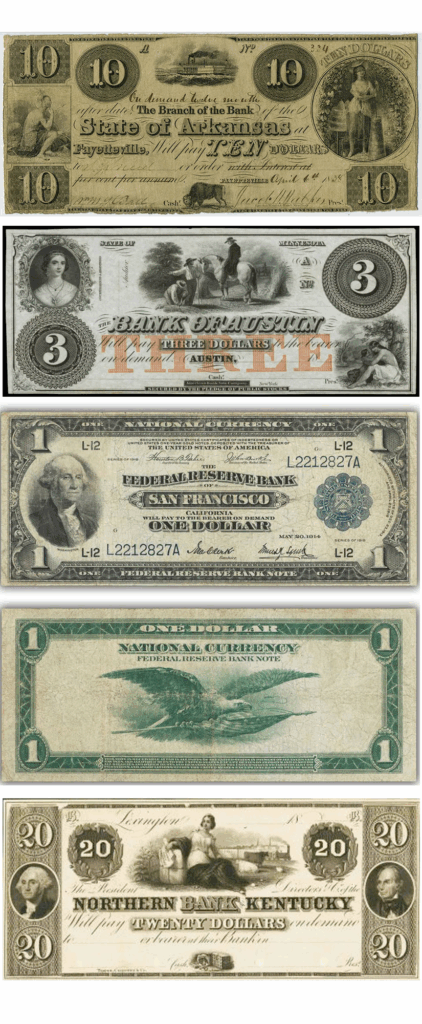When America Had Hundreds of Currencies: A Forgotten Chapter of U.S. Money
Today, we take the U.S. dollar for granted. Whether you’re buying a coffee in California or a shirt in Florida, you expect that green piece of paper in your wallet to be accepted without question.

But in the early 1800s? That wasn’t the case.
Before the U.S. established a unified national currency, the country was a patchwork of banknotes issued by hundreds of private banks, state-chartered institutions, and local governments. Each printed its own money—and not all of it was worth the same.
The Era of “Wildcat Banks”
Between the 1790s and the Civil War, the U.S. operated without a central bank for long stretches. Instead, thousands of state-chartered banks printed their own paper notes. These banks were often small, under-regulated, and sometimes outright fraudulent.
They printed money in varying denominations, designs, and credibility. The further you traveled from the issuing bank, the less valuable—or trustworthy—the note became.
Some of these currencies included:
- State Bank Notes – Issued by state-chartered banks like the Bank of Kentucky or the Georgia State Bank.
- City Bank Notes – For example, the New York Mechanics Bank or the Philadelphia Bank.
- Private Bank Notes – Often from “wildcat banks” in remote areas, where redeeming your note for gold or silver was practically impossible.
- Merchant or Local Scrip – Issued by companies, railroads, or even towns to pay workers or conduct trade.
Some notes looked legitimate. Others were cartoonish or misspelled. And many were totally worthless if the bank failed—which was common.
Why It Was a Problem
- There was no national standard, so a $10 note from Ohio might only be worth $6 in New York.
- Counterfeiting was rampant—there were no consistent designs or security features.
- Banks collapsed often, leaving note holders with paper they couldn’t redeem.
- Traveling merchants and customers had to use discount books to figure out how much each note was worth in real time.
Imagine carrying 5 or 6 types of money—and constantly checking which one would be accepted. That was life in pre-Civil War America.
The Fix: The National Banking Acts (1863–64)
During the Civil War, the U.S. government passed the National Banking Acts to bring order to the chaos.
Key reforms:
- Established a system of national banks authorized to issue uniform national banknotes backed by U.S. Treasury bonds.
- Taxed state banknotes to encourage a single national currency.
- Laid the groundwork for the Federal Reserve, established in 1913.
This gave the U.S. one currency, one standard—and eventually led to the Federal Reserve Note, which we use today.
What It Means Today
The story of America’s fractured currency system is a reminder that money only works when it’s trusted, standardized, and easy to use.
It’s also a fascinating parallel to today’s digital asset world—where crypto projects issue their own tokens, and people often ask:
- What is this token worth in real-world terms?
- Can I use it everywhere?
- Will it still be around next month?
In a way, we’re watching history rhyme—with better tech and bigger stakes.
